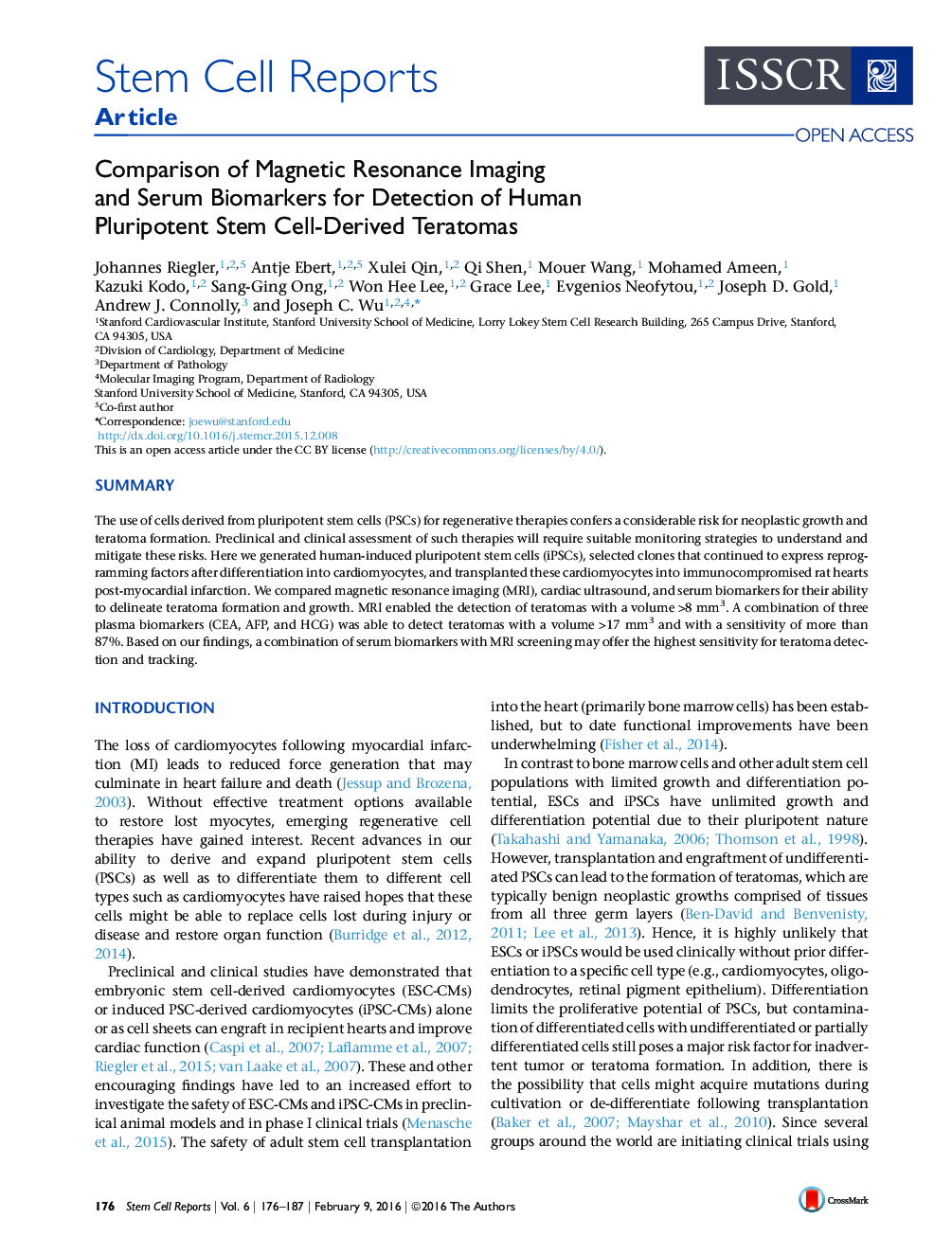| Article ID | Journal | Published Year | Pages | File Type |
|---|---|---|---|---|
| 2093274 | Stem Cell Reports | 2016 | 12 Pages |
•A combination of three serum biomarkers can detect teratomas >17 mm3•MRI can detect teratomas >8 mm3•Immature teratomas not detectable by serum biomarkers can be detected with MRI•Combining MRI and serum biomarkers enables sensitive detection of neoplastic growth
SummaryThe use of cells derived from pluripotent stem cells (PSCs) for regenerative therapies confers a considerable risk for neoplastic growth and teratoma formation. Preclinical and clinical assessment of such therapies will require suitable monitoring strategies to understand and mitigate these risks. Here we generated human-induced pluripotent stem cells (iPSCs), selected clones that continued to express reprogramming factors after differentiation into cardiomyocytes, and transplanted these cardiomyocytes into immunocompromised rat hearts post-myocardial infarction. We compared magnetic resonance imaging (MRI), cardiac ultrasound, and serum biomarkers for their ability to delineate teratoma formation and growth. MRI enabled the detection of teratomas with a volume >8 mm3. A combination of three plasma biomarkers (CEA, AFP, and HCG) was able to detect teratomas with a volume >17 mm3 and with a sensitivity of more than 87%. Based on our findings, a combination of serum biomarkers with MRI screening may offer the highest sensitivity for teratoma detection and tracking.
